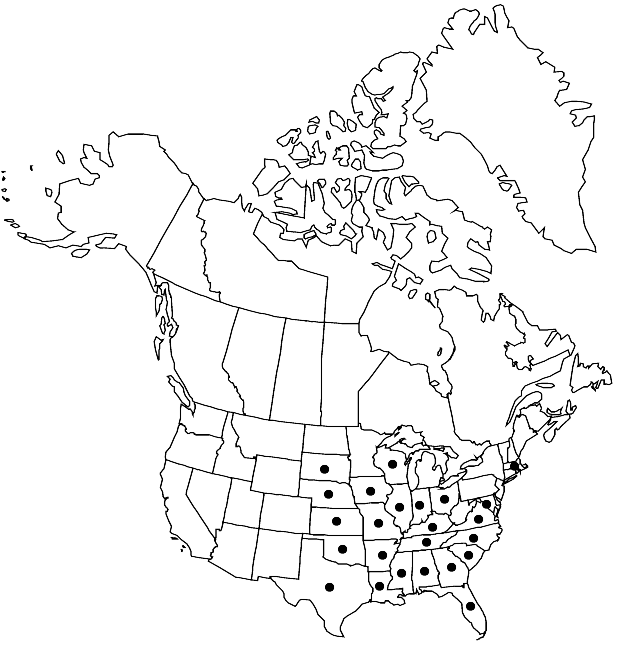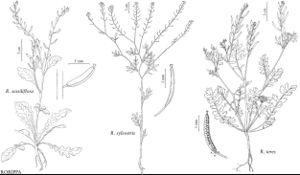Difference between revisions of "Rorippa sessiliflora"
Key Spring Fl. Manhattan, 18. 1894.
FNA>Volume Importer |
FNA>Volume Importer |
(No difference)
| |
Revision as of 22:56, 16 December 2019
Annuals; glabrous throughout. Stems (simple or several-branched from base) erect, branched distally, (0.9–)2–4.5(–6.3) dm. Basal leaves not rosulate; blade margins dentate. Cauline leaves shortly petiolate or sessile; blade oblong or oblanceolate to obovate, 1.5–7(–13.3) cm × (5–)10–28(–50) mm, (lateral lobes much smaller than terminal), base auriculate or not, margins dentate or less frequently sinuate, or (lateral lobes) denticulate or entire. Racemes considerably elongated. Fruiting pedicels divaricate-ascending to horizontal, straight, 0.5–2(–4) mm, (slender or stout). Flowers: sepals ascending to spreading, ovate, 1.2–2 × 0.5–0.8 mm; petals absent; median filaments 1–1.6 mm; anthers ovate, 0.2–0.3 mm. Fruits siliques, straight or curved, oblong to oblong-linear, (4–)6–9(–12) × (1.4–)1.8–2.8(–3.5) mm; ovules 158–242 per ovary; style 0.1–0.5 mm. Seeds biseriate, yellow-brown, cordiform, 0.4–0.5 mm, foveolate. 2n = 16.
Phenology: Flowering Mar–Oct.
Habitat: Mud flats, ditches, wet old fields, roadsides, sloughs, fallow fields, floodplains, stream banks, edges of pools, waste grounds, gardens
Elevation: 0-300 m
Distribution

Ala., Ark., D.C., Fla., Ga., Ill., Ind., Iowa, Kans., Ky., La., Mass., Miss., Mo., Nebr., N.C., Ohio, Okla., S.C., S.Dak., Tenn., Tex., Va., Wis.
Discussion
Both R. L. Stuckey (1972) and R. C. Rollins (1993) indicated that Rorippa sessiliflora has strongly saccate sepals, but all specimens that I examined failed to show any sign of this character. The species is very distinctive and can easily be distinguished by an absence of petals and by having fruiting pedicels 0.5–2(–4) mm.
Selected References
None.
